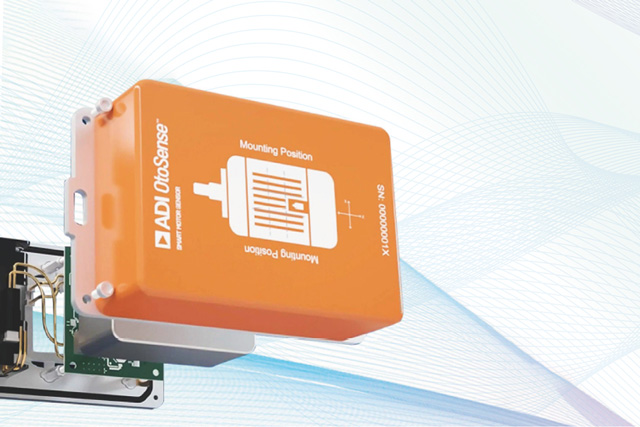
- Analog Devices, Inc.
- NEXT Mobility
Managing Power Stability: Addressing Battery Voltage Fluctuations in Automotive Applications
In automotive applications, battery voltage is often stepped down from 12V for use during normal operation, but several conditions cause the battery voltage to fluctuate.
Example: During cranking, when the starter motor draws power from the battery to start the engine, a phenomenon occurs where the battery voltage temporarily drops significantly.
For this reason, a buck-boost DC/DC converter is typically used as the first power stage after the battery.
However, a known challenge with H-bridge buck-boost converters is their poor responsiveness and the resulting output voltage instability during the transition between step-down and step-up modes.
MAX20039/MAX20040 Solves the Issue
As a solution to this challenge, we introduce the MAX20039/MAX20040 from the former Maxim company.
The MAX20039/MAX20040 are H-bridge buck-boost converters that can perform seamless switching between boost and buck operation modes. They limit the voltage drop during these mode transitions to within ±3%.
Additionally, the four FETs that form the buck-boost converter are integrated into the IC, which enables a reduction in PCB size.
-

Buck-boost power train archtecture and operation table
-

Positive line-transienr response
-

Negative line-transienr response
* Waveform diagrams and other figures are excerpted from the source below.
MAX20039 / MAX20040 Features
| / | MAX20039 | MAX20040 |
|---|---|---|
| VIN (V) (min) | 2 | |
| VIN (V) (max) | 40 | |
| VOUT1 (V) (max) | 12 | |
| IOUT1 (A) (max) | 0.6 | 1.2 |
| Switch Type | Internal | |
| Preset VOUT (V) | 5 | |
| Output Adjust. Method | Preset, Resistor | |
| Synchronous Switching? | Yes | |
| Power Good Signal | Yes | |
| # DC-DC Outputs | 1 | |
| Alternate Topology | Step-Down, Step-Up, Step-Up/Down | |
| Switching Frequency (kHz) | 200, 300, 400, 500, 1000, 2200 | |
| Design Tools | EE-Sim | |
| Package/Pins | TQFN-CU/20 | |
| Oper. Temp. (°C) | -40 to +85 -40 to +125 | |
| Budgetary Price (See Notes) | 1.95 | 2.2 |
Small Solution
600mA/1.2A output current
(1A capability @ 105°C ambient)
4.5V to 36V supply voltage (40V tolerant)
Cold crank support down to 2V input
Fixed output 3.3V/5V and 1% ref on FB pin
Adjustable Fsw 220kHz to 2.2MHz
Seamless transition from buck to boost mode
PGOOD output (96% ± 2%)
SYNC input
Small 16-SW TQFN-EP 4mm x 4mm package
Efficient
Low Iq of 36μA @ VOUT 3.3V no load (EN ‘hi’)
Low Iq of 52μA @ VOUT 5V no load (EN ‘hi’)
< 10μA shutdown current (EN ‘lo’)
AEC-Q100, temp range: -40°C to +125°C
Availability
Stock
EvKit
MAX20040EVKIT#
Detail Link
Inquiry
Related Product Information

Low-Noise Switching Regulator Suitable for Power Supply in RF Products
Silent Switcher 3 is the latest switching regulator technology that achieves low low-frequency noise and fast load response.
- Analog Devices, Inc.
- ICT and Industrial

AI-Powered Smart Motor System for Motor Diagnostics
With the ADI OtoSense Smart Motor Sensor, let AI handle everything from threshold setting to analysis, diagnostics, and root cause identification—preventing downtime and avoiding losses.
- Analog Devices, Inc.
- NEXT Mobility
- ICT and Industrial
- Smart Factories and Robotics

New LTspice③ Parametric Analysis and Tolerance Analysis
LTspice is a free SPICE simulator provided by Analog Devices. This article introduces methods for parametric and tolerance analysis, as well as how to use dot commands.
- Analog Devices, Inc.
- NEXT Mobility

New LTspice②: How to Use SPICE Models
LTspice is a free SPICE simulator provided by Analog Devices. This article introduces how to obtain demo circuits and various models.
- Analog Devices, Inc.
- NEXT Mobility

New LTspice Complete Guide ①
LTspice is a free SPICE simulator provided by Analog Devices. This article explains the updates and performance improvements in the latest version, LTspice24.
- Analog Devices, Inc.
- NEXT Mobility

Introduction to Wireless Gesture Sensors (Use Cases for Analog Devices Products)
The wireless gesture sensor developed by NEXTY Electronics enables remote control of home appliances and display devices at low cost.
- Analog Devices, Inc.
- NEXT Mobility
- ICT and Industrial
- Smart Factories and Robotics

